Legendary Basilisk With Deadly Petrifying Stare – King Of The Serpents
A. Sutherland - AncientPages.com - Who or what was this mysterious creature that could kill just by looking at you?
It is described by ancient writers and philosophers who often wondered about the creature's appearance and function.
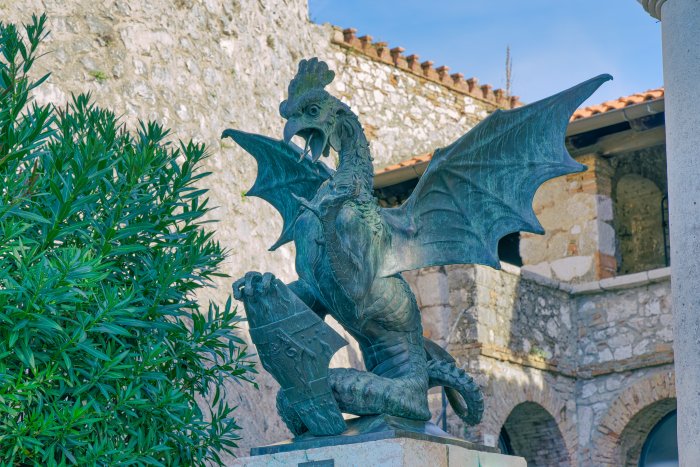 Rijeka Basilisk statue at the Trsat castle court. Credit: Adobe Stock -Dario Bajurin
Rijeka Basilisk statue at the Trsat castle court. Credit: Adobe Stock -Dario Bajurin
Pliny described the Basilisk as a snake with white spots or stripes, fiery breath, and a death-dealing cry, and the creature could drive people mad with its poison. It was believed that the Basilisk had one thing in common with Medusa: the ability to strike onlookers dead by its glance alone.
"It destroys all shrubs, not only by its contact but those even that it has breathed upon; it burns up all the grass and breaks the stones."
"To this dreadful monster, the effluvium of the weasel is fatal, a thing that has been tried with success, for kings have often desired to see its body when killed; so true is it that it has pleased Nature that there should be nothing without its antidote."
" The animal is thrown into the hole of the Basilisk, which is easily known from the soil around it being infected. The weasel destroys the Basilisk by its odor but dies in this struggle of nature against its own self."
In later legends, however, the Basilisk appears to have grown in size. In medieval times, the creature had a mysterious power to kill itself by gazing at itself in a mirror or hearing the rooster's crowing. Some contemporary travelers had a tradition of carrying roosters around with them.
Writers such as Jonathan Swift, Leonardo Da Vinci, and Albertus Magnus often linked the Basilisk to alchemy.
When the terrible Basilisk is nothing more than only ashes, these ashes retain magical properties that were sought after by alchemists of the thirteenth century. As one ancient legend says, an alchemist uses the creature's ashes to turn silver into gold. Perhaps this terrible creature's impressive power may remain with him even after death.
The basilisk and the weasel, by Marcus Gheeraerts the Elder. The cockatrice (pictured) became seen as synonymous with the basilisk when the "basiliscus" in Bartholomeus Anglicus' De proprietatibus rerum (ca 1260) was translated by John Trevisa as "cockatrice" (1397).
Among the Basilisk's magical properties, especially one of them was widely known among the ancient people. The creature had the power to protect whatever you wanted to keep safe from danger like theft or attack.
In the late classical era, many Gnostic seals depicted the Basilisk to ward off evil. The beast is also mentioned in Geoffrey Chaucer's "Canterbury Tales," but the author calls it a Basilicok. Later, Basilisk's name appeared in works by William Shakespeare, Voltaire, and Abraham Stoker (or Bram Stoker), an Irish author famous today for his 1897 Gothic horror novel "Dracula."
Fascinating Myths And Legends From Across The World
According to Marianne Moore's Poetry, the Basilisk is a "machine-like creature, sensitive to its environment and able to register noise through vibrations. The basilisk's parts are "smooth-working" and efficient.
Its maneuverability is impressive and resembles the mechanisms deployed to recycle them as copies, images, and reproductions.
Sometimes known as the Jesus Christ lizard because of its ability to walk on water, the mysterious Basilisk is also a symbol of Christian divinity; it represents the faith in things beyond human perception and understanding.
Otherwise, in early Christian beliefs, the Basilisk was a symbol of the devil in his form as the one responsible for tempting Adam and Eve. It was also stunning in color and shape; however, it was deadly to the human race.
Written by – A. Sutherland - AncientPages.com Senior Staff Writer
Updated on July 19, 2022
Copyright © AncientPages.com All rights reserved. This material may not be published, broadcast, rewritten or redistributed in whole or part without the express written permission of AncientPages.com
Expand for referencesReferences:
V. Bazin, Marianne Moore and the Cultures of Modernity
Goldstein, J. 101 Amazing Mythical Beasts and Legendary Creatures
Matthews, J., Matthews, C. The Element Encyclopedia of Magical Creatures
More From Ancient Pages
-
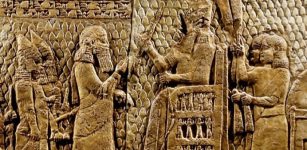 Lost Kingdom Of Idu And Its Seven Unknown Kings
Civilizations | Jul 25, 2023
Lost Kingdom Of Idu And Its Seven Unknown Kings
Civilizations | Jul 25, 2023 -
 Remarkable Complex Of Early Neolithic Monuments Discovered In Herefordshire, England
Archaeology | Jul 21, 2023
Remarkable Complex Of Early Neolithic Monuments Discovered In Herefordshire, England
Archaeology | Jul 21, 2023 -
 10 Types Of Ancient Crosses In Different Cultures Explained
Featured Stories | May 23, 2017
10 Types Of Ancient Crosses In Different Cultures Explained
Featured Stories | May 23, 2017 -
 Excavations In Ancient City Of Cremna – One Of The Five Colonial Cities In Pisidia
Archaeology | Sep 26, 2023
Excavations In Ancient City Of Cremna – One Of The Five Colonial Cities In Pisidia
Archaeology | Sep 26, 2023 -
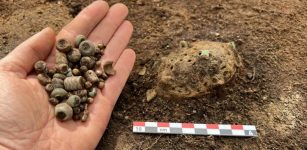 Amazing Artifacts Found In Viking Double Grave In Norwegian Garden
Archaeology | Jul 10, 2023
Amazing Artifacts Found In Viking Double Grave In Norwegian Garden
Archaeology | Jul 10, 2023 -
 Cuicuilco Circular Pyramid: Ancient Astronomical Observatory And Place Of Power
Civilizations | Aug 24, 2021
Cuicuilco Circular Pyramid: Ancient Astronomical Observatory And Place Of Power
Civilizations | Aug 24, 2021 -
 Peculiar Accounts Of Ancient Flying Metallic Dragons And Bells In China And Japan
Ancient Mysteries | Dec 27, 2018
Peculiar Accounts Of Ancient Flying Metallic Dragons And Bells In China And Japan
Ancient Mysteries | Dec 27, 2018 -
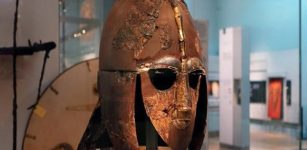 Burial Practices In Unified Cultures Of Early Medieval Europe
Archaeology | Jan 22, 2021
Burial Practices In Unified Cultures Of Early Medieval Europe
Archaeology | Jan 22, 2021 -
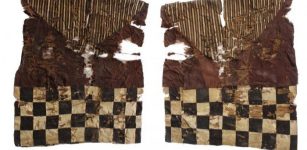 Rare And Well-Preserved Inka Tunic Discovered In Chile
Archaeology | Feb 14, 2023
Rare And Well-Preserved Inka Tunic Discovered In Chile
Archaeology | Feb 14, 2023 -
 Neolithic Monuments, Prehistoric Pits And Anglo-Saxon Cemetery Unearthed In England
Archaeology | Apr 19, 2016
Neolithic Monuments, Prehistoric Pits And Anglo-Saxon Cemetery Unearthed In England
Archaeology | Apr 19, 2016 -
 New Interpretation Of The Domesday Book Of William I The Conqueror
News | Jan 16, 2021
New Interpretation Of The Domesday Book Of William I The Conqueror
News | Jan 16, 2021 -
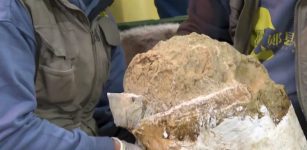 Fossilized Million-Year-Old Human Skull Of Yunxian Man Excavated In China
Archaeology | Jan 10, 2023
Fossilized Million-Year-Old Human Skull Of Yunxian Man Excavated In China
Archaeology | Jan 10, 2023 -
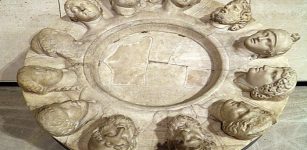 ‘Altar Of Twelve Gods’ At Gabii, Italy Was Once An Important Ancient Place
Civilizations | Apr 1, 2023
‘Altar Of Twelve Gods’ At Gabii, Italy Was Once An Important Ancient Place
Civilizations | Apr 1, 2023 -
 Did Lead Pollution Cause IQ Declines Among Ancient Romans?
Places | Jan 8, 2025
Did Lead Pollution Cause IQ Declines Among Ancient Romans?
Places | Jan 8, 2025 -
 Ancient Babylonian Astronomical Records Confirm Slowing Of Earth’s Spin
Archaeology | Dec 20, 2016
Ancient Babylonian Astronomical Records Confirm Slowing Of Earth’s Spin
Archaeology | Dec 20, 2016 -
 Encounter Between Neanderthals And Homo Sapiens – Genome Study Traces The History
DNA | Oct 18, 2023
Encounter Between Neanderthals And Homo Sapiens – Genome Study Traces The History
DNA | Oct 18, 2023 -
 On This Day In History: The Great Fire Of London – On July 10, 1212
News | Jul 10, 2016
On This Day In History: The Great Fire Of London – On July 10, 1212
News | Jul 10, 2016 -
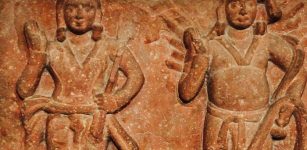 Agni: Hindu God Of Divine Illumination And One Of The Three Supreme Deities Of Vedic Lore
Featured Stories | May 3, 2018
Agni: Hindu God Of Divine Illumination And One Of The Three Supreme Deities Of Vedic Lore
Featured Stories | May 3, 2018 -
 How Did Sargon Become The Most Powerful Ruler Of Mesopotamia?
Featured Stories | Apr 3, 2020
How Did Sargon Become The Most Powerful Ruler Of Mesopotamia?
Featured Stories | Apr 3, 2020 -
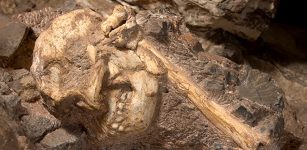 3.6 Million-Year-Old Rare Skeleton Of Human Ancestor Revealed By Researchers In South Africa
Archaeology | Dec 7, 2017
3.6 Million-Year-Old Rare Skeleton Of Human Ancestor Revealed By Researchers In South Africa
Archaeology | Dec 7, 2017

